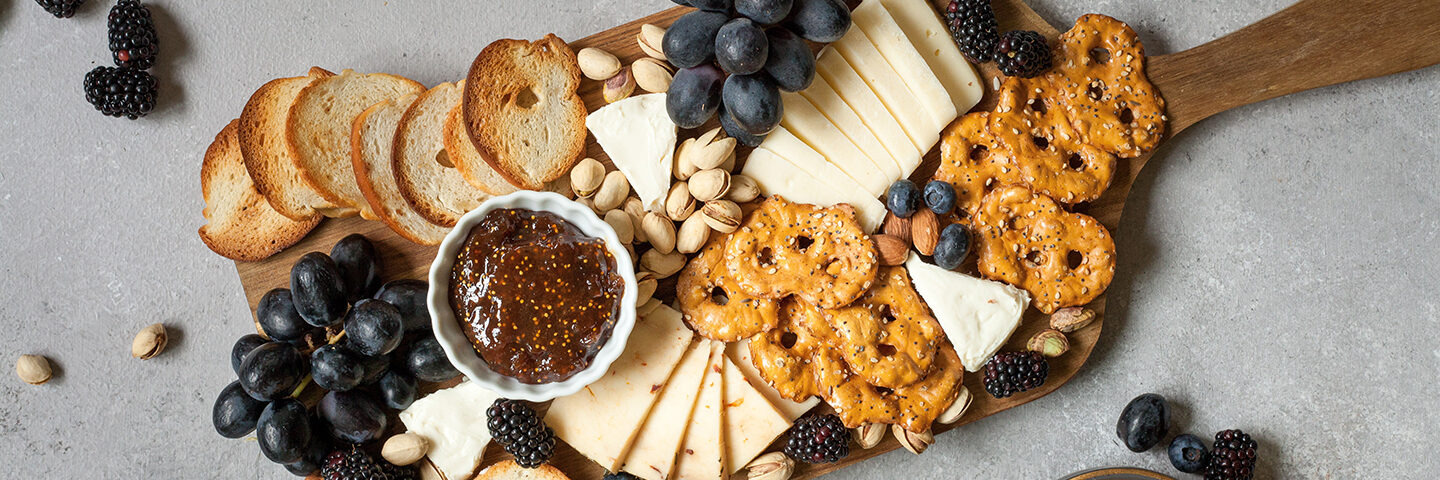
Today I Will…Enjoy My Fruits & Veggies!
In these days of information and stimulus overload, it’s a no brainer to argue for a bit of intentionality. Eating is one of our most important health behaviors, and one that all individuals do multiple times each day. It stands to reason that being intentional in how we approach not only eating, but also increasing produce consumption at a population level, could make a big difference in public health and well-being, now and into the future.
Starting Small For Big Increases
Scientists estimate that consumers make more than 200 food-related decisions daily. The Produce for Better Health Foundation (PBH) State Of The Plate research indicates that, on average, people consume vegetables 7.5 times per week and fruit even less – 5.8 times per week. At the risk of being glass half full (perhaps with 100% fruit juice), wouldn’t it be incredible to channel the sheer power of our brains during just a small percentage of our daily decisions to achieve greater fruit and vegetable consumption? But, how do we do this?
First, Make It Easy
Maybe you have heard of the Hippocratic oath, which has guided medical practice since ancient times, and is often boiled down simply to, “first, do no harm.” In the much newer field of behavioral science, the commensurate mantra is “first, make it easy.” In other words, when compelling a free-living human to do anything, the most effective way is to make it easy for them to do…and repeat often.
What does this entail? First, finding and reinforcing those opportunities that maximize what individuals already know, feel, and do and then connecting those instances with fruits and vegetables. The lowest hanging fruit, so to speak, of course, is what they are already doing – or where plantentions become bonafide fruit and vegetable habits. For example, if someone has a daily coffee habit, let’s use the coffee context to also trigger a daily banana consumption habit.
More Plants Equals More Produce Pairing Opportunities
The PBH State of the Plate research is a treasure trove of insights when it comes to understanding fruit and vegetable eating behaviors and how they have evolved over time.
For instance, did you know that the top 5…
- Fruits by frequency are bananas, apples, strawberries, oranges, and grapes and fruits by volume are melons, apples, peaches, citrus and bananas?
- Vegetables by frequency are lettuce/ salads, French fries, onions, tomatoes, and carrots and vegetables by volume are lettuce/salads, French fries, green beans, broccoli and beans/legumes?
Or, that…
- Eating occasions that include bananas, grapes, blueberries, strawberries, and oranges rose from 2015 to 2020 and apple eating occasions, along with raisins, mixed fruit, peaches, cantaloupe, and pineapple, declined over the same time period?
- Potatoes, Cesar salad, avocados, tomato sauce/paste, and tomato salsa grew in frequency of use between 2015-2020, while onions, tomatoes, green salads, lettuce, and carrots declined?
We are also creatures of habit when it comes to when and how foods are eaten, including what they are eaten with.
Fruits are most frequently eaten with other fruits, although peaches and pears stand out as being paired with vegetables. Breakfast foods are a vehicle for fruit intake, as are salads, meal side dishes and snacks. Bananas and berries remain breakfast staples. Apples and pineapple are most frequently included in lunch and dinner meals. Oranges are often incorporated in lunches and snacks, while melons tend to be versatile in their use throughout the day.
The most common use of vegetables has long been the declining dinner side dish. Broccoli is a dinner side dish staple and is paired two-thirds of the time with poultry, potatoes and red meat. Cauliflower is frequently paired with seafood. Nine times out of 10, carrots are consumed with fruits, vegetables, potatoes, poultry or red meat, while tomatoes are also consumed with vegetables, fruits, and poultry, but instead of potatoes and red meat, are eaten with salads and eggs. Potato types vary with French fries most likely to be eaten with burgers and sandwiches, baked potatoes with vegetables and red meat, and mashed potatoes with other vegetables and poultry.
Planting Success
Knowing is one thing. Doing is another. Taking what we know about what and how fruits and vegetables are regularly eaten can be an effective tool to inform messaging, programs and campaigns. We can double down on behaviors that are on the rise – perhaps reinforcing with new and delicious recipes or a fun social media campaign – as well as work to salvage some eating behaviors that have been long-standing habits, yet are recently waning. We can plant suggestions that tie into behaviors that feel natural for our audiences and let them take it from there by, for instance, reminding them how much they love cauliflower with their seafood or that they are craving avocado toast. We can show them mouth-watering ways to add more than one type of berry to their yogurt or a whole banana on their cereal instead of half. It all adds up!
So here’s a plan. Have A Plant®! Let’s be intentional. Keep it real. Keep it simple. But keep on with the keepin’ on and let’s get more plants on plates this month, and beyond.


